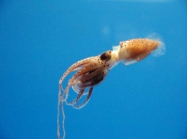RAS taxon details
Histioteuthidae A. E. Verrill, 1881
11749 (urn:lsid:marinespecies.org:taxname:11749)
accepted
Family
marine, brackish, fresh, terrestrial
Not documented
MolluscaBase eds. (2025). MolluscaBase. Histioteuthidae A. E. Verrill, 1881. Accessed through: RAS (Eds.) (2025) Register of Antarctic Species at: https://ras.biodiversity.aq/aphia.php/www.pfeil-verlag.de/04biol/rest/aphia.php?p=taxdetails&id=11749 on 2025-09-16
RAS (Eds.) (2025). Register of Antarctic Species. Histioteuthidae A. E. Verrill, 1881. Accessed at: https://ras.biodiversity.aq/aphia.php?p=taxdetails&id=11749 on 2025-09-16
Date
action
by
2004-12-21 15:54:05Z
created
db_admin
basis of record
Young, R.E. & Vecchione, M. (2013). Histioteuthidae Verrill, 1881. Version 03 November 2013 (under construction). In The Tree of Life Web Project, http://tolweb.org/. , available online at http://tolweb.org/Histioteuthidae/19782/2013.11.03 [details]
additional source Voss, N. A., Nesis, K. N. & Rodhouse, P. G. (1998). The cephalopod family Histioteuthidae (Oegopsida): Systematics, biology, and biogeography. In: Voss, N. A., Vecchione, M., Toll, R. B. & Sweeney, M. J. eds (1998) Systematics and biogeography of cephalopods. <em>Smithsonian Contributions to Zoology.</em> Vol. 2, 586: 293-372. [details]
additional source Roper, C. F. E.; Jereb, P. (2010). Family Histioteuthidae. <em>In: P. Jereb & C.F.E. Roper, eds. Cephalopods of the world. An annotated and illustrated catalogue of species known to date. Volume 2. Myopsid and Oegopsid Squids. FAO Species Catalogue for Fishery Purposes. No. 4, Vol. 2. Rome, FAO.</em> pp. 223-236., available online at http://www.fao.org/docrep/014/i1920e/i1920e.pdf [details]
additional source Fernández-Álvarez, F. Á.; Taite, M.; Vecchione, M.; Villanueva, R.; Allcock, A. L. (2021). A phylogenomic look into the systematics of oceanic squids (order Oegopsida). <em>Zoological Journal of the Linnean Society.</em> 194(4): 1212-1235., available online at https://doi.org/10.1093/zoolinnean/zlab069 [details]
identification resource Lu, C.C. & Chung, W.S. (2017). <em>Guide to the cephalopods of Taiwan</em>. National Museum of Natural Science, Taichung, Taiwan, 560 pp. ISBN 978-986-05-2569-4.
page(s): 312 [details]
additional source Voss, N. A., Nesis, K. N. & Rodhouse, P. G. (1998). The cephalopod family Histioteuthidae (Oegopsida): Systematics, biology, and biogeography. In: Voss, N. A., Vecchione, M., Toll, R. B. & Sweeney, M. J. eds (1998) Systematics and biogeography of cephalopods. <em>Smithsonian Contributions to Zoology.</em> Vol. 2, 586: 293-372. [details]
additional source Roper, C. F. E.; Jereb, P. (2010). Family Histioteuthidae. <em>In: P. Jereb & C.F.E. Roper, eds. Cephalopods of the world. An annotated and illustrated catalogue of species known to date. Volume 2. Myopsid and Oegopsid Squids. FAO Species Catalogue for Fishery Purposes. No. 4, Vol. 2. Rome, FAO.</em> pp. 223-236., available online at http://www.fao.org/docrep/014/i1920e/i1920e.pdf [details]
additional source Fernández-Álvarez, F. Á.; Taite, M.; Vecchione, M.; Villanueva, R.; Allcock, A. L. (2021). A phylogenomic look into the systematics of oceanic squids (order Oegopsida). <em>Zoological Journal of the Linnean Society.</em> 194(4): 1212-1235., available online at https://doi.org/10.1093/zoolinnean/zlab069 [details]
identification resource Lu, C.C. & Chung, W.S. (2017). <em>Guide to the cephalopods of Taiwan</em>. National Museum of Natural Science, Taichung, Taiwan, 560 pp. ISBN 978-986-05-2569-4.
page(s): 312 [details]
 Present
Present  Inaccurate
Inaccurate  Introduced: alien
Introduced: alien  Containing type locality
Containing type locality
